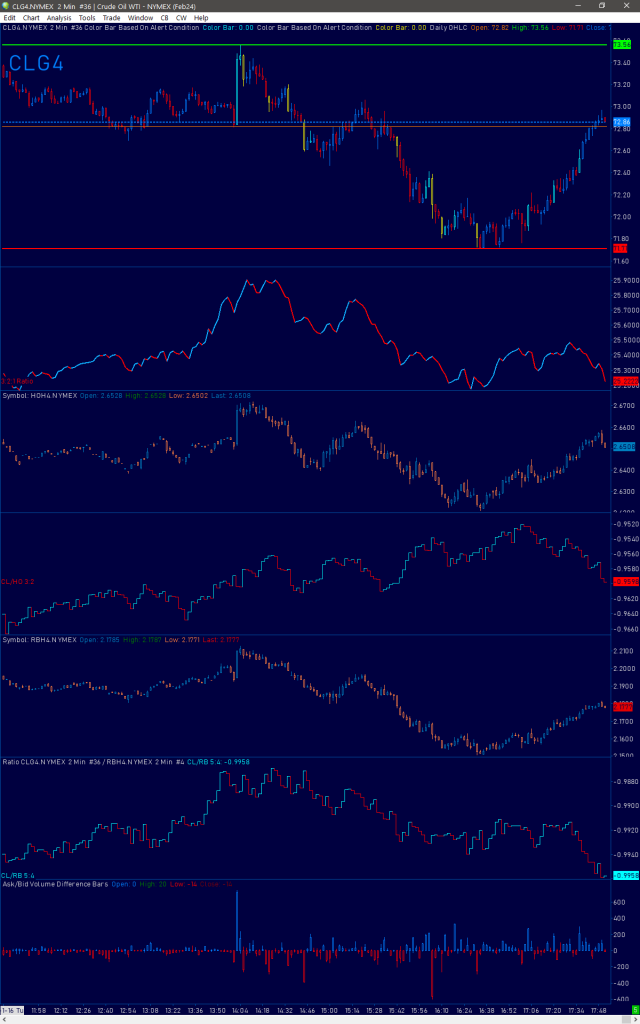
The crude oil crack spread serves as a vital metric within energy markets, offering insights into refining margins and profitability. This guide explores the intricacies of the crude oil crack spread, including types like the 3:2:1 ratio spread, factors shaping its fluctuations, and effective trading strategies. Additionally, it highlights related products such as RB Gasoline, HO Heating Oil, and the CL WTI Crude Oil contract traded on the NYMEX exchange.
What is the Crude Oil Crack Spread?
The crude oil crack spread signifies the price differential between crude oil and its refined products, like gasoline, diesel, and heating oil. It acts as a critical indicator for refining margins, providing a glimpse into profitability after processing crude oil into refined products.
Factors Affecting the Crack Spread:
Crude Oil Prices:
- Global oil price movements, driven by supply-demand dynamics, geopolitical tensions, OPEC decisions, and economic factors, directly influence the crack spread.
Refined Product Prices:
- Market demand, regulatory changes, refining capacities, and seasonal variations affecting gasoline, diesel, and other refined products significantly impact the crack spread.
Refining Margins and Operational Costs:
-
- Efficiency, maintenance expenses, technological advancements within refineries, and input costs directly influence the crack spread.
Global Supply and Demand Dynamics:
-
- Changes in global energy consumption patterns, geopolitical crises, transportation demands, and regional supply disruptions contribute to fluctuations in the crack spread.
Types of Crude Oil Crack Spreads:
3:2:1 Ratio Spread:
-
- This spread involves the simultaneous purchase of three barrels of crude oil and the sale of two barrels of gasoline and one barrel of heating oil, reflecting the refining process and emphasizing gasoline production.
What’s the purpose of the WTI crude 3:2:1 Ratio Spread:
- Offers a benchmark for refiners to evaluate their yields of gasoline and heating oil.
- Allows traders to speculate on demand and pricing differences between refined products.
Trading CL WTI Crude Oil Contracts on NYMEX:
- CL WTI Crude Oil contracts on the NYMEX exchange represent futures contracts for West Texas Intermediate (WTI) crude oil. These contracts enable traders to speculate on future crude oil prices, influenced by global supply-demand dynamics, geopolitical events, and inventory levels.

Conclusion:
Understanding the crude oil crack spread, its types, and related contracts like CL WTI Crude Oil on NYMEX is essential for traders navigating the energy market. By comprehensively analyzing influencing factors, conducting in-depth market research, and employing robust risk management strategies, traders can aim for profitable outcomes in crack spread trading and related energy products on exchanges like NYMEX.
Understanding Risk Management: Introducing the Kelly Criterion Calculator for TradersFutures Trading
Digital Nomad Trader? Embracing Freedom by Traveling Around the World!Futures Trading
Navigating Prop Firm Trading Taxes: A Comprehensive Guide for Independent Contractors in the U.S. and BeyondFutures Trading
Decoding the WTI Crude Oil Crack Spread: Types, Influential Factors, and Trading Strategies in Energy MarketsFutures Trading
Unlocking the Soybean Crush Spread: Understanding, Influencing Factors, and Profitable Trading StrategiesFutures Trading
Unpacking the Efficacy of Bookmap Indicator in Financial Markets: Does Order Book History Really Matter?Day Trading Futures Trading Proprietary Trading
How does ADHD affect traders and what techniques can I use to overcome these effectsTrader Psychology Trading Psychology
6 Ways to Turn ADHD into Your Strength in TradingDay Trading Trading Psychology
When do adaptive order execution algorithms adjust their urgency from passive limit orders to active market orders?Futures Trading
How do adaptive order execution algorithms minimize market impact?Futures Trading











0 responses on "Decoding the WTI Crude Oil Crack Spread: Types, Influential Factors, and Trading Strategies in Energy Markets"